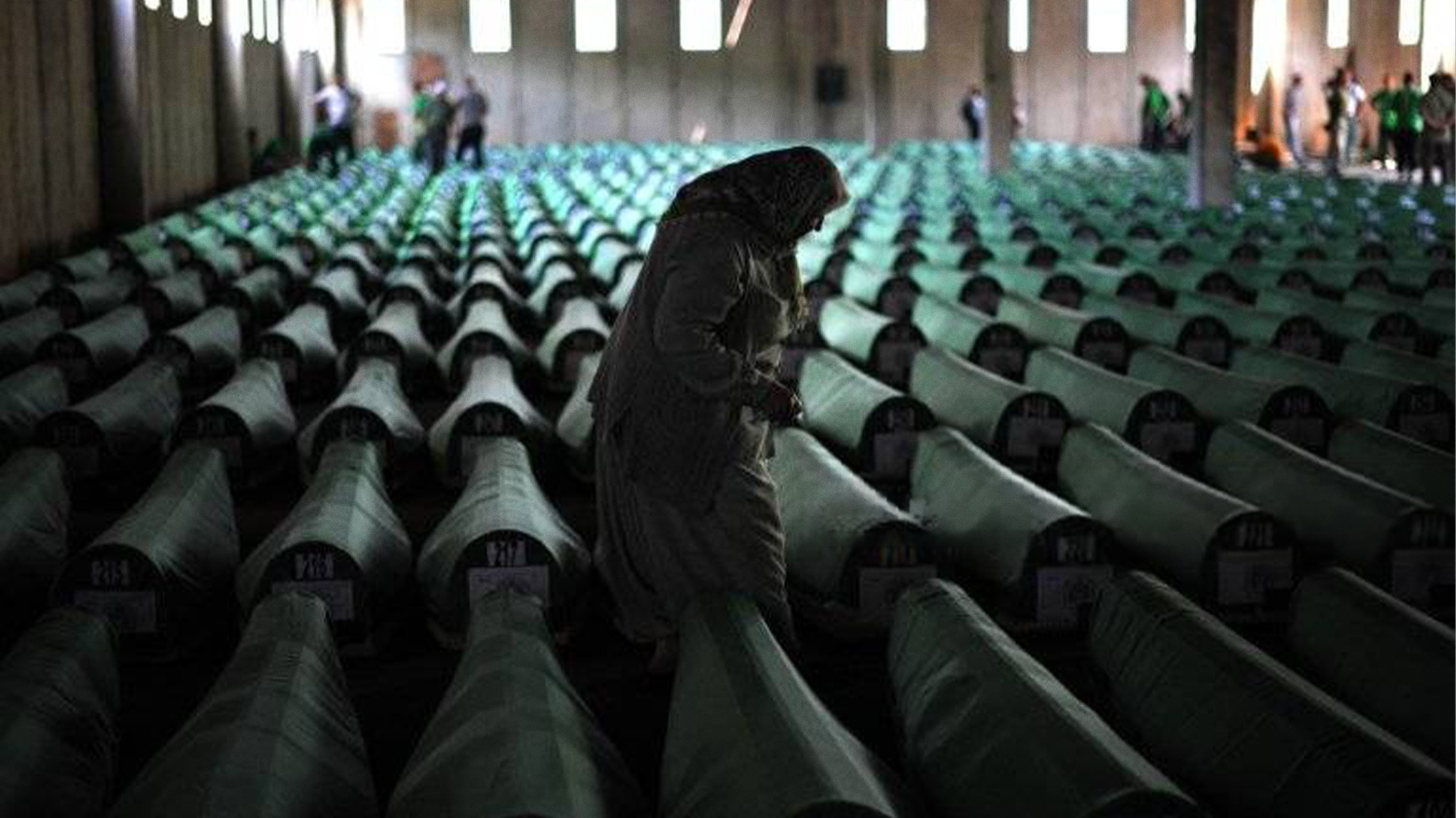Three Decades After Srebrenica, Pain Remains—and So Does Denial
On the 30th anniversary of the Srebrenica genocide, the UN honored over 8,000 Bosnian Muslims killed in 1995. Survivors buried newly identified victims, as denial persists in parts of the region. July 11 is now a UN-recognized day of remembrance to uphold truth and prevent future atrocities.

By Kamaran Aziz
ERBIL (Kurdistan24) – As the world marks the 30th anniversary of the Srebrenica genocide, the United Nations and survivors gathered in remembrance of more than 8,000 Bosnian Muslim men and boys systematically executed by Bosnian Serb forces in July 1995. The massacre, which unfolded despite Srebrenica’s designation as a United Nations “safe area,” remains the largest atrocity on European soil since the Holocaust.
According to the United Nations, the Srebrenica genocide was the defining tragedy of the 1992–1995 war in Bosnia and Herzegovina, which claimed over 100,000 lives and displaced more than two million people, most of them Bosnian Muslims. In July 1995, Bosnian Serb troops under the command of General Ratko Mladic overran the eastern Bosnian enclave of Srebrenica.
Though it had been declared a UN-protected zone under Security Council Resolution 819, its population—over 40,000 people at the time—was left vulnerable to what would become an orchestrated campaign of ethnic cleansing.
As reported by AFP, Bosnian Serb forces forcibly separated men and teenage boys from the rest of the civilian population before executing them and burying their bodies in mass graves. Approximately 25,000 women, children, and the elderly were deported. Over the past three decades, about 7,000 victims have been identified and buried through meticulous forensic work. However, nearly 1,000 remain missing.
In preparation for the 30th anniversary, the UN General Assembly, through a resolution co-sponsored by Germany and Rwanda, declared July 11 as the International Day of Reflection and Commemoration of the 1995 Genocide in Srebrenica. The resolution also tasked the UN Secretary-General with launching an educational outreach program on the genocide. The Assembly condemned any form of denial or distortion of the genocide and urged member states to preserve historical facts through education to prevent future atrocities.
The emotional toll of the massacre remains staggering. This year, the remains of seven newly identified victims—two 19-year-old men and a 67-year-old woman—will be buried during ceremonies at the Srebrenica-Potočari Memorial Centre. Among them is Sejdalija Alic, whose partial remains were identified. His daughter, Mirzeta Karic, told AFP, “This year, I'm having my father buried. But only one bone, his lower jaw.” Karic has already buried 49 other family members lost in the massacre, including her brother, who was laid to rest in 2003. “I've been able to endure everything, but I think this funeral will be the worst. We're having a bone buried. I can't describe the pain.”
The International Criminal Tribunal for the former Yugoslavia (ICTY) and the International Court of Justice (ICJ) have both recognized the Srebrenica massacre as genocide. Mladic and former Bosnian Serb leader Radovan Karadžić were convicted of genocide and sentenced to life in prison. Nevertheless, a culture of denial persists in parts of the region, particularly in Republika Srpska and Serbia.
According to the Srebrenica Memorial Centre’s annual report, 305 public instances of genocide denial or minimization were recorded in 2024 across Serbian and Bosnian Serb media outlets. Republika Srpska President Milorad Dodik, a prominent figure in promoting such narratives, was responsible for 42 of those instances. “It is very rare to find someone in Republika Srpska who acknowledges that there was genocide,” said Neira Sabanovic, a researcher at the Université Libre de Bruxelles, in comments to AFP.
On Saturday, political and religious figures from Republika Srpska and Serbia are scheduled to hold a separate memorial in Bratunac, near Srebrenica, commemorating over 3,200 Serb soldiers and civilians who died during the war. Portraits of around 600 of the dead were displayed along the road leading to the Srebrenica Memorial Centre earlier this week.
Emir Suljagić, director of the Srebrenica Memorial Centre and a survivor of the genocide, addressed the growing divide in how the tragedy is remembered. “These people are not participating in the same debate. They are having a conversation with themselves, and they are still in 1995,” he said during an interview with local television. Still, he emphasized the significance of international recognition: “We have won a very important battle, the battle for international recognition.”
As the international community pauses to reflect, the legacy of Srebrenica continues to shape the pursuit of justice, truth, and reconciliation in Bosnia and beyond. The enduring wounds left by the genocide, coupled with ongoing revisionism, underscore the importance of remembrance and the responsibility of the world to confront historical atrocities with honesty and resolve.
